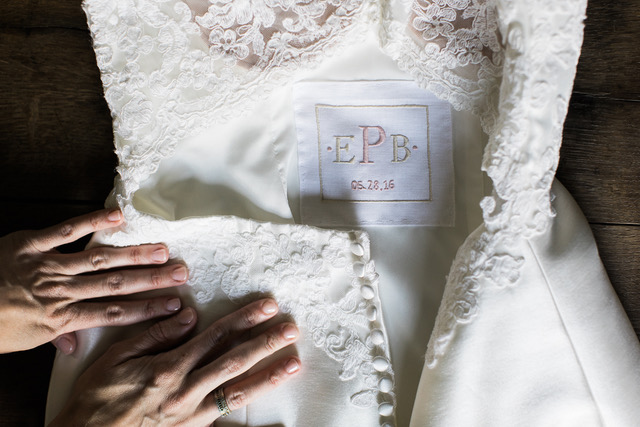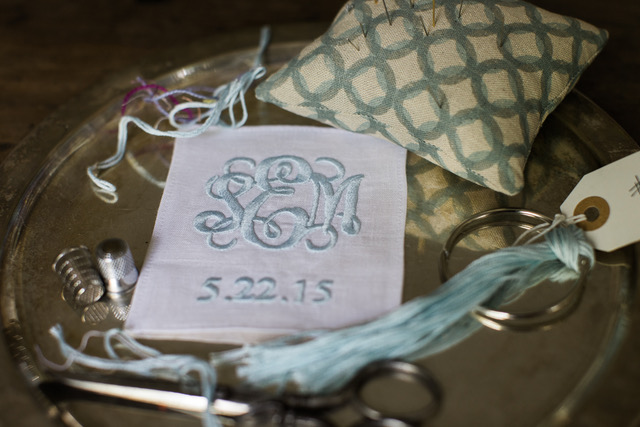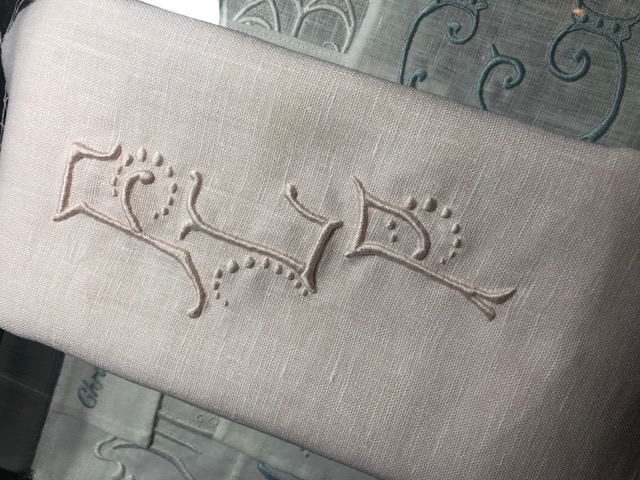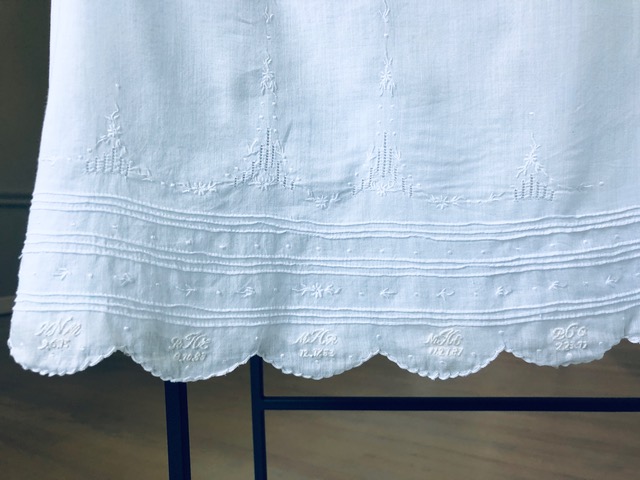Tara McSherry is a hand embroiderer living just outside of Chattanooga, TN with her husband and two boys. She says that whenever people call her an artist, she just laughs.
“I’m incredibly practical,” she says. “I don’t paint, I don’t sculpt. I think of myself as utilitarian. I’m more like a carpenter, but no one would deny a carpenter is an artist at some point.”
We wanted to find out more about her artistry and her inspiration – so we did.

Why is hand embroidery something that appeals to you?
It is just so pretty and reveals the hand of man. We live in an age when no one makes anything … or makes it well. Several years ago, I bought an antique cupboard from Maine. The dealer turned the drawers over to show me the hand planing. It is 300 years old and you can see everything, even the nails, were made by hand. That’s why I like hand embroidery -I want to make things that aren’t done on a machine. People make utilitarian objects anymore. I want to put that handiwork back out into the world.

How did you get started?
At first, it was to please my mother. She is a quilter from another era completely and has always found refuge in needlework. My dad’s family is from England. His mother and grandmother were needleworkers and stitching/making things was a way for my mom to relate to them. My mom was always sewing and always displaying the objects of beauty they all created.
When I was 16, she bought me a hand towel kit at an estate sale. I sat and watched the Golden Girls and stitched it. It wasn’t hard for me and they turned out really nicely. I was actually good at it. They are still hanging in her bathroom today.
When did you start embroidering in earnest?
I studied art history in college and then worked in an art gallery where I started doing appraisals. I studied the different markets and went to auction houses and antique fairs. At Round Top in Texas, I met my first linen monger.
French linens changed my life. I couldn’t tear myself away from the rich, monogrammed linens. In learning about the embroidery history, I discovered that the trail kind of stops in the 1950s. I bought several monograms and took them apart to try and learn how they were made. There are just layers and layers of stitches. A lot of beautiful work came out of Lyon, France. There was a legitimate embroidery industry there. Their process was very time intensive.

I practiced embroidery a lot while I was trapped inside, nursing, and napping babies. Later, I got a lot better and sent my work to Julia B Linens. Julia ended up contracting with me to fix the mistakes made by other workers. She doesn’t do clothes but does napkins, sheets, and tablecloths. I helped train myself that way too.
Who do you embroider for now?
Most of my business comes from women, which I like because historically, embroidery has been woman’s work. I really embrace the femininity of it. It is really important to me. I have done from work for a men’s store in Chattanooga and haberdasher in New York who wanted me to monogram 100 shirts.
I work with a lot of the creative, young mothers who want embroidered cardigans and bows. And I’m happy to do that. I love working on bridal gowns, baptismal gowns, and hand towels the most because the monograms and motifs tend to be the most elaborate. You know that people are going to keep those sacramental pieces. I’ve done linen pieces that go into the lining of a wedding gown, or a train. I recently stitched a family crest for a fur stole. I always say if you can dream it, I can stitch it.
What is the cost for custom embroidery?
A simple design on a collar or cardigan runs about $75. A wedding handkerchief is around $100 with most other pieces ranging from $125-$150.
How do you like to work?
I listen to classical music. I really like the old Latin masses that are set to music. I drink tea or coffee. I have framed pieces of my grandmother’s work and black & white photos of my great grandmother around for inspiration. I was so much more productive when my kids were in school but since COVID, it has taken me a while to find the rhythm. I have about three to four projects and work two months out.
During 2020, I bought an antique store counter. It is French so it goes with my vibe. I like to imagine it is from Lyon. The hope is that having it will help me keep the business, homeschool and embroidery notions organized in an old-world way. I refer to my embroidery studio as “the shop” now that my counter is there.
I say that the only thing I’m patient with is embroidery. It calms me down.
Also, I am very nearsighted -so I can thread a needle faster than you can blink.




